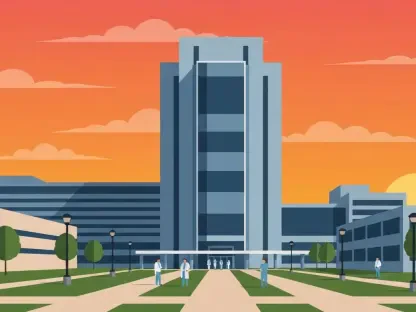What happens when a multi-million-dollar transit project teeters on the edge of failure before the first shovel even hits the ground? In the high-stakes arena of construction and infrastructure, where every decision ripples through budgets and timelines, the initial vibe set among stakeholders can dictate the entire trajectory of the project. This subtle undercurrent, often overlooked amidst technical plans and contracts, holds the power to unite teams or fracture them from day one. The concept of project tone emerges as a silent force, capable of shaping outcomes in ways that numbers and blueprints alone cannot predict.
The Hidden Power of First Impressions in Project Success
First impressions in a project setting carry weight far beyond mere pleasantries. When stakeholders convene for that inaugural meeting, the atmosphere—whether tense, dismissive, or welcoming—sets a precedent that lingers through months or even years of collaboration. A strained start can sow seeds of distrust, while a positive one can ignite a shared sense of purpose, influencing everything from daily interactions to critical decision-making.
Consider a major urban transit initiative where early friction between contractors and public agencies led to misaligned goals. That initial discord bled into delayed approvals and cost overruns, ultimately pushing the completion date back by over a year. In contrast, projects that kick off with mutual respect often see smoother conflict resolution, proving that the tone established at the outset acts as an invisible framework for success.
This dynamic underscores a broader truth in the industry: human elements often outweigh technical prowess in determining outcomes. While expertise and resources are vital, the emotional and psychological undercurrents of a team’s first interactions lay the groundwork for how challenges will be met. Recognizing this hidden power prompts a deeper look into why modern projects demand a fresh perspective on collaboration.
The Stakes of Modern Projects Demand a New Approach
Today’s transit and construction landscapes are more unforgiving than ever, with public scrutiny intensifying and budgets shrinking against ambitious timelines. Delays or cost overruns no longer just affect bottom lines; they erode community trust and political goodwill, amplifying the pressure on all involved. Traditional methods, where stakeholders operate in isolated silos, fall short in addressing these complex demands, often leading to fragmented efforts and costly missteps.
The industry has witnessed a shift toward collaborative models like construction manager/general contractor (CM/GC) and progressive design-build, which prioritize partnership over rivalry. These approaches, adopted in numerous high-profile projects since 2025, have shown a marked reduction in disputes, with some studies indicating a 30% drop in litigation costs compared to conventional methods. This trend reflects a growing consensus that success hinges on collective alignment rather than individual wins.
Navigating these high stakes requires more than structural innovation; it demands a cultural pivot. Setting a tone of unity and shared accountability from the start becomes not just beneficial but essential, as it equips teams to handle the relentless pace and expectations of modern infrastructure challenges. This necessity paves the way for understanding the specific elements that define such a tone.
Key Elements of Setting the Right Project Tone
Establishing an effective project tone involves deliberate components, each contributing uniquely to a cohesive environment. Collaboration stands as the bedrock, where intentional partnerships among agencies, designers, and contractors align goals early on. Projects delivered through such synergy, like a recent light rail expansion completed under budget, demonstrate how joint commitment can streamline execution and minimize friction.
Communication plays a pivotal role, acting as a bridge over potential misunderstandings. Open, face-to-face dialogue, coupled with active listening, accelerates decisions and fosters clarity, as seen in initiatives where weekly roundtables cut resolution times for design issues by nearly 40%. Meanwhile, mindful language shapes perceptions, with training programs showing that replacing combative terms with cooperative ones can transform tense negotiations into constructive discussions. Inclusivity ensures every team member, from field staff to executives, feels valued, a practice validated by case studies where cross-level workshops boosted morale and productivity. Lastly, transparency in processes like open-book estimating builds trust, with detailed breakdowns of cost changes reassuring stakeholders through structured honesty, as evidenced by projects avoiding disputes through such candor.
These elements collectively create a foundation that sustains long-term partnerships. Their integration from the initial stages not only prevents early pitfalls but also cultivates a resilient culture capable of weathering inevitable challenges. Understanding their impact through real-world voices adds further depth to their significance.
Voices from the Field: Insights and Experiences
Industry perspectives bring the concept of project tone to life, grounding abstract ideas in tangible outcomes. Clayton Gilliland, president of a prominent construction firm, describes collaboration as an “activator” that transforms project dynamics. He recalls a preconstruction meeting where sitting across from partners to hash out contract details in person sparked a mutual respect that carried through years of complex work, underscoring the value of direct engagement.
Training sessions on language have also left lasting impressions on team interactions. One such program, focused on swapping adversarial phrasing for cooperative alternatives, shifted how participants approached conflicts, with attendees noting a 50% improvement in meeting productivity. These firsthand accounts highlight how small adjustments in tone ripple outward, enhancing trust and efficiency across sprawling project timelines.
Such insights from seasoned professionals and structured exercises reveal a consistent truth: the human side of construction often dictates success more than technical plans. These stories bridge theory and practice, illustrating why intentional efforts to set a positive tone resonate deeply in the field. They also pave the way for actionable steps to embed this mindset from the start.
Practical Strategies for Setting a Positive Project Tone
Implementing a constructive tone requires clear, actionable measures tailored to the unique demands of transit and construction endeavors. Starting with early engagement through face-to-face kickoff meetings helps establish rapport and align objectives among stakeholders, setting a precedent for open dialogue. Choosing words wisely in contracts and discussions, avoiding terms that hint at blame, further reinforces a cooperative spirit, as seen in agreements that prioritize shared goals over punitive clauses.
Involving the entire team through inclusive training sessions signals that every role matters, fostering a unified culture from day one. Prioritizing transparency with open-book processes for estimates and design updates ensures clarity, often through detailed orientations that explain cost shifts step by step. Committing to continuous alignment via regular check-ins maintains this tone over extended periods, allowing teams to adapt to hurdles as a cohesive unit, a strategy proven effective in projects spanning from 2025 to multi-year horizons.
These steps offer a practical roadmap for industry leaders, builders, and designers to cultivate an environment where collaboration thrives. By embedding such practices into the fabric of project planning, the foundation for success becomes not just aspirational but achievable. Reflecting on past efforts provides a lens for how these strategies shaped outcomes and what lies ahead.
Looking back, the journey of numerous transit and construction projects revealed a profound lesson: the tone set at the beginning often determined whether teams stumbled or soared. Instances where early meetings prioritized mutual understanding saw fewer disputes and stronger partnerships, while those marked by discord struggled to regain footing. The deliberate choice to foster collaboration, transparency, and inclusivity proved transformative, turning potential conflicts into opportunities for innovation.
Reflecting on those experiences, the path forward demanded a steadfast commitment to these principles. Stakeholders across the board were encouraged to initiate projects with structured engagements that prioritized human connection over mere transactions. Adopting tools and training to refine communication and maintain alignment emerged as a critical next step, ensuring that the tone remained a guiding light. Ultimately, the challenge rested in sustaining this mindset through every phase, building not just infrastructure but enduring trust for future endeavors.









